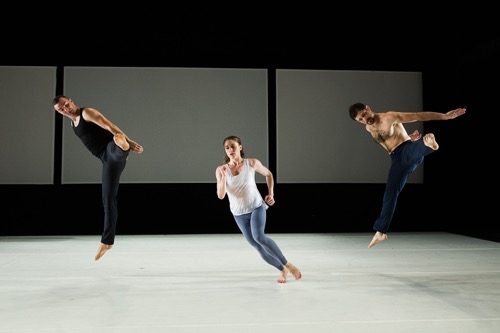
“When a normal, healthy child is born, usually in the father’s compound, the women perform the nkwa to rejoice. Then…they sing and dance their way to the compounds of the mother’s kin to inform them of the joyous event through the dance-play, gathering additional dancers as it moves from compound to compound. In this nkwa, in which only married women who have given birth perform, the dancers highlight procreative body parts, birth exercises and child care gestures.” – page 164, Hanna JL, To Dance is Human: a theory of non-verbal communication, 1979. Rev. ed. 1987.
About Dancing Thru Pregnancy®
by Ann F. Cowlin MA, CSM, CCE, Founder/Director, DTP
From its inception in 1979, Dancing Thru Pregnancy® (DTP) has been inspired by this passage from Judith Lynne Hanna’s amazing text, in which she describes how the Ubakala of Nigeria “announce” the birth of a child. The dance serves a dual purpose – it tells of the birth, while it teaches the uninitiated how pregnancy and birth occur.
As a professional dancer, I long ago recognized the transformative power of dance to make experiences accessible. Through Hanna’s writing we see how dance is itself one of the earliest and most profound ways in which common human experiences are taught and learned. Contemporary culture often removes this type of learning from our environment.
Employing dance to help women approach birth has always struck me as an obvious first choice in preparing women for the physical, emotional, identity-forming and joyful process of birth. From its start – under the auspices of the West Virginia State Health Department’s Improved Pregnancy Outcome Project and the WVU Medical School Ob/Gyn Department – through its ongoing development at Yale University, DTP has undergone a perpetual choreographic process toward the most beneficial way to help women cope with this major life event.
In the intervening years, science and technology have reinforced our understanding of how non-verbal
learning happens. In the process, DTP has trained thousands of movement teachers and trainers about pregnancy and postpartum fitness, bringing activity to millions of moms-to-be worldwide. Our own programs, based at Yale, have a 14% cesarean rate over 35 years.
Mirror neurons are key to how empathy and understanding of experience are produced when people view and learn movement and gesture. The mere perception of an action sets off a low level firing of the neural pathway that executes the actions we are seeing. A most excellent discussion of mirror neurons appears in Acharya and Shukla’s article, Mirror Neurons: Enigma of the metaphysical modular brain, J Nat Sci Biol Med. 2012 Jul-Dec; 3(2): 118–124. The authors provide a thorough grounding in the history of how we have come to recognize that mirror neurons exist and how they work.
There are more arenas in which dance also shines as a preparation.
Appropriately choreographed, dance enables excellent physical fitness and includes all the elements of physical activity that research demonstrates are effective for optimal health in pregnancy and coping with the rigors of birth. From the perspective of exercise physiology, labor is an ultra-distance endurance event, followed by a strength test (birth), a physical recovery period, and 18 years or more of sleep deprivation.
What fitness elements contribute to a healthy pregnancy, powerful birth, and short- and long-term health for mom and baby?
Cardiovascular Fitness
Achieving cardiovascular endurance (aerobic fitness) is essential. There are so many benefits of aerobic fitness that a full recitation and hundreds of citations will not fit in this blog. Check DTP’s website Research pages and our Facebook page for references. But, to summarize: cardiovascular fitness improves implantation, enhances nutrient and oxygen delivery, reduces the incidence or severity of some pregnancy disorders, reduces the risk of fetal distress, reduces stress on maternal cardiac reserve while pushing, reduces the risk of cesarean, hastens recovery, helps maintain a healthy weight, alleviates anxiety, builds body-image confidence and enhances long term maternal and fetal health. The two forms of cardio or aerobic activity most often cited for effectiveness are running and aerobic dancing.
Strength & Flexibility
Two other elements of dance that are useful for pregnant, birthing and parenting moms are strength and flexibility. There are many movement actions derived from numerous dance forms that promote both power and elasticity in the muscles, connective tissue and skeletal structure. Some effective positions, movements and skills are shared with other disciplines: Traditional childbirth preparation, weight training, gymnastics, physical therapy, yoga, t’ai chi, pilates, boot camp, plyometrics, proprioceptor neuromuscular facilitation (PNF) techniques, Feldenkrais, Alexander, somatic therapies, posture training, etc.
Mind/Body Skills
An arena in which dance shines is building mind-body skills. Dancing relies on centering – aligning with gravity to produce the greatest efficiency for movement (balance) – along with breathing as a component of movement.
Align
Breathe
Focus on the breath
Sense the movement within
Then, allow the body to dance…
Centering also reduces the load on the nervous system and allows the brain to modulate into the parasympathetic nervous system state, also known as the relaxation response (autogenic training, hypnosis, meditation, progressive relaxation), the zone (athletes’ term), mindfulness (big in research presently), the trophotropic response (the scientific term), or the alpha state (the current fad term). Dancers sometimes refer to this as tuning in to the unconscious or flow. The actual coordination of motions, such as pushing, is primarily unconscious. The conscious piece is keeping a clear image of the goal, while allowing the body to work. This is the skill that allows the birthing mother to follow her body’s urges, flowing with the labor rather than trying to control what is going on. It gives her access to the cathartic and euphoric nature of birth as a dance.
Muscle Bonding
A part of the dance experience I truly enjoy is a phenomenon known as muscle bonding. When a group does vigorous physical activity together – dancing together, a sports team, a dance company – a special kind of bond forms. Part of the euphoria is this muscle bonding experience. The wonder of it is what the Ubakala women experience moving together to announce the birth of a child.
When I am dancing with my pregnant ladies and we are in the grove with our modified hip hop
routine, we are smiling at each other and feeling completely alive. We are breathing hard and working hard, but we are strong. My hope is always that when she senses that labor and birth are starting, a mom-to-be can get in that groove with the baby and support personnel. Birth becomes a dance.
A Caveat
No blog on pregnancy or birth is complete without a caveat. Every pregnancy and birth is unique. Sometimes things go wrong. But, mostly they go right! And, moms can optimize the experience. One of the greatest dangers to pregnancy and birth is sedentary behavior. Regular, vigorous, strength-inducing, flexibility gaining, mindfulness, relaxing, muscle bonding fun is available. Take advantage of it.
In future posts, we will discuss specific items that help the body and mind prepare for birth and motherhood.

Ann F. Cowlin is a movement specialist and dance instructor in the Yale University Department of Athletics, Physical Education and Recreation; coordinator of the Childbirth Education Program at the Yale Health Center; and former Assistant Clinical Professor in the Yale University School of Nursing. She founded Dancing Thru Pregnancy®, Inc. in 1979, and is the author of Women’s Fitness Program Development, and chapters in Varney’s Midwifery (3rd, 4th & 5th ed.) and Sports Nutrition (4th ed.). A former professional ballet and modern dancer who received her MA in Dance from UCLA, she is a member of the International Association for Dance Medicine and Science (IADMS) and the Society for the Developmental Origins of Health and Disease (DOHaD).






